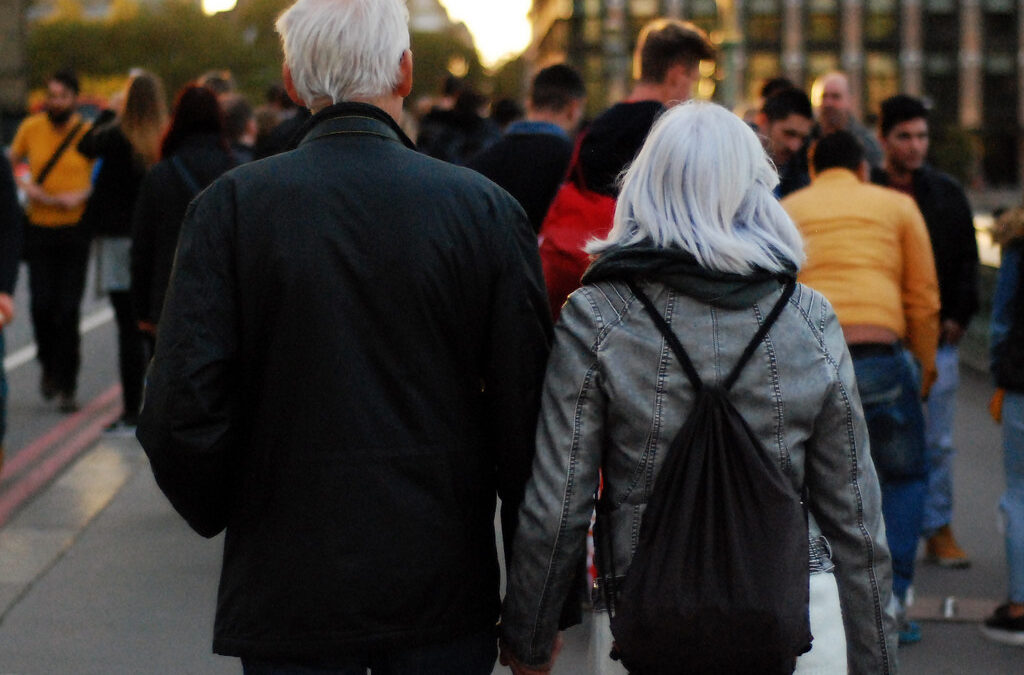Have you ever wondered how we can call, text, email, video chat, and communicate in unprecedented ways, but still be disconnected? Despite our rapidly-expanding communication technology, we seem to find it difficult to communicate what matters most with those who matter most. As the generation gap widens and the pace of life accelerates, loneliness and social disconnect are happening at epic levels.
This communication crisis seems most evident for older generations who are approaching, experiencing, or well past retirement. Companies are offering golden parachutes and early retirement to get their older, more experienced employees out of the way to make room for fresh talent. Neighborhoods are losing older couples to retirement communities. And families are sending older relatives to care facilities to live out their remaining years in growing isolation and loneliness. Increasingly, younger generations use their technological prowess to feel superior to those who came before them, even turning the monikers of older generations into insults. A huge portion of our population is becoming irrelevant, obsolete, or marginalized.
There is something deeply wrong with a society that shuns one of its most important resources. These older couples and individuals often have stores of experience, untapped skills, and free time to help and lift others. We have to unleash their potential for good and heal the generation gap if we want to stabilize our rapidly-crumbling society.
Hearts to Children is here to start the process of healing and moving forward. This course will help those 55 and older heal and build relationships by adopting new rhythms of communication. The course embraces communication technology without diminishing the importance of meaningful personal connections. Participants will create groups of four (two couples or four individuals) that will work closely together as they complete course materials. Because they will help each other through personal changes and epiphanies, these groups will create lifelong relationships of trust. As they grow individually and as a group, participants will begin communicating their discoveries with their personal relations. They will feel empowered to reach out to friends and loved ones and help them engage. They will take their place as mentors, supporters, and cherished friends. They will learn self-reliance in their groups of four and establish habits for regular communication with their personal relations.
Of course, the generation gap goes both ways. Older generations aren’t the only ones who are disconnected. In fact, the more connected young people are to digital media and devices, the less connected they are to what makes life truly meaningful. How often have you heard complaints that the younger generation has no understanding about hard work, ethics, morality, and the wisdom of those who came before? In most cases, these misunderstandings aren’t malicious. Young people are victims of our industrial social norms. Hearts to Children is built to help them as well.
Technology is vital in the Hearts to Children model, since courses are offered digitally and many of the assignments require use of technology to complete. Young adults (17-25) are digital natives and uniquely qualified to help older generations use these technologies. As part of the Hearts to Children course, each group of four will have access to a young adult to help them navigate their digital assets. The youth will benefit as well. They can use the income from Hearts to Children to save money for college or missions. They will gain experience in teaching, public speaking, and customer service. And most importantly, they will build relationships with older generations and benefit from their insight.
Our goal is to heal the generation gap. As we do that, we believe we will also see drastic changes in individual people. Older participants will feel empowered to take an active role in their lives and relationships. They will feel more connected to their world and able to make a real difference. Their expertise will no longer be wasted or allowed to deteriorate.
The young people who participate may think they are already fully connected and engaged with their world. After all, they have the latest smartphone and hundreds of friends on social media. They may be surprised at how difficult it is to communicate with real people about real things without the lens of their smart device. Their work with Hearts to Children and the groups of four that sponsor them will help them naturally overcome what has become an epidemic of ineptitude. They will learn to form meaningful relationships and engage with their world on a much less superficial level.
The more people participate in Hearts to Children, the more their circles of family and friends will hear about it and join in. The more meaningful relationships we are able to form between and among different age groups, the sooner we can heal the generation gap and move forward together.


Recent Comments